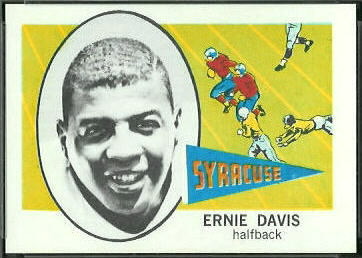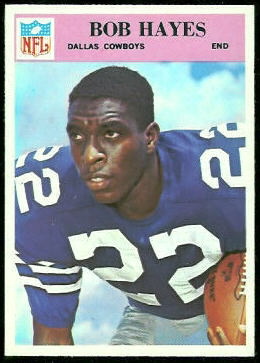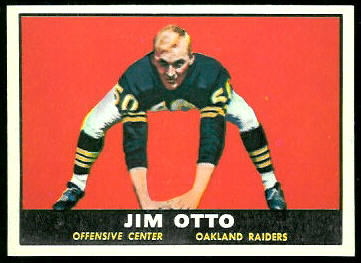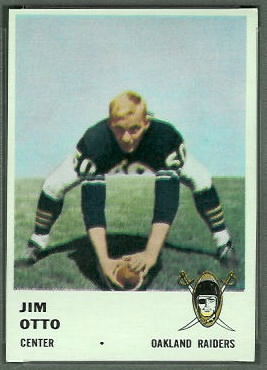X is for X’s and O’s
May 6th, 2010 | Published in ABCs of Vintage Football Cards, General Collecting Info
A few vintage football cards show diagrams of plays. To me the diagrams seem like filler, and I am not fond of them. I can’t think of a better subject that starts with “X,” though, so here’s a quick rundown. (Hmm, does that mean I’m using them for filler, too?)
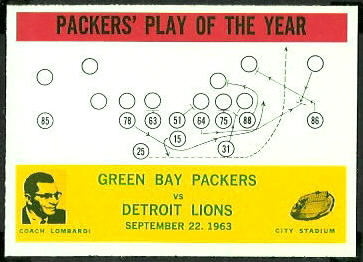
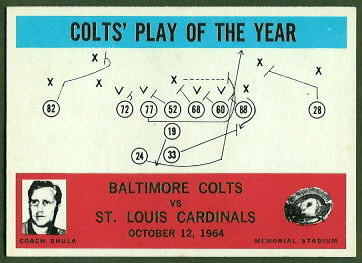 The 1964 and 1965 Philadelphia sets include a “Play of the Year” card for each team. On the front of each card is a diagram of the play and a small image of the team’s head coach. The small images are a nice touch, I suppose, but I would have preferred dedicated cards with full-size images for the coaches.
The 1964 and 1965 Philadelphia sets include a “Play of the Year” card for each team. On the front of each card is a diagram of the play and a small image of the team’s head coach. The small images are a nice touch, I suppose, but I would have preferred dedicated cards with full-size images for the coaches.
Among the coaches on the Play of the Year cards are Don Shula and Vince Lombardi. Neither coach, to my knowledge, was pictured on card of his own during his career. The 1964 Play of the Year cards could be considered Shula and Lombardi’s rookie cards, but I haven’t seen them designated as such. Pictured here are the 1964 Packers Play of the Year card and the 1965 Philadelphia Colts Play of the Year card.
The back of each team’s Play of the Year card includes a list of the offensive players, which I like. Occasionally a player’s friend or relative will ask me if I have a card of the player, but I have to tell him that the player never appeared on a card. Since some cardless players’ names appear on the Play of the Year cards, I can at least offer one of those cards to the friend or relative.
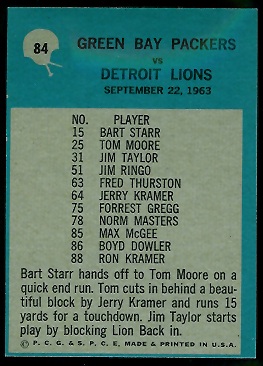
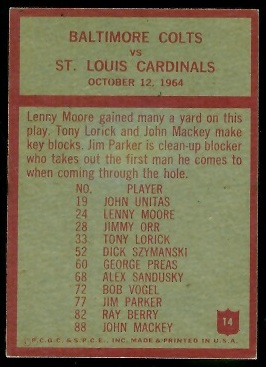
As I wrote last year, the Play of the Year cards actually feature some pretty ordinary plays. I theorized then that Philadelphia chose short plays so the diagrams would fit on the cards. Could the Lions’ play of the year really have been just a ten-yard completion? “But Jim, what about that 75-yard TD pass from Earl Morrall to Terry Barr?” “Sorry, Lou, it won’t fit on the card.” I am sticking to my theory.
The Philadelphia cards are the only ones I can think of with play diagrams on the front. A couple of other issues have them on the back. One of these is the 1955 Bowman set, which has a generic play diagram on the back of most cards. Cards of players with lots of stats don’t have diagrams on them, but cards of linemen, defensive players, and rookies all do. Some of the generic diagrams appear on multiple cards, too. Filler, I tell you.
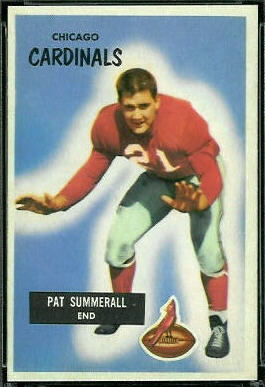
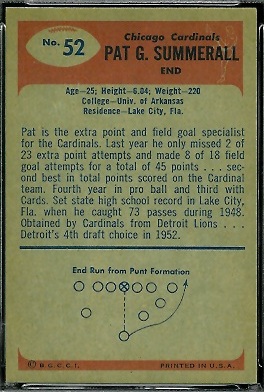
Finally, we have the 1976 Wonder Bread set, which gets my vote for the worst card backs ever. Each features a diagram one of Hank Stram’s favorite plays, along with a detailed description of the play. As a kid–or, for that matter, as an adult–I wouldn’t have given the diagrams a second look. But Stram had just taken over as the Saints’ coach in 1976, so perhaps Topps (who printed the cards for Wonder Bread) was trying to ride the buzz about that. Whatever buzz there was didn’t last long, though: even with Stram’s playbook, the Saints went 7-21 in 1976 and 1977.
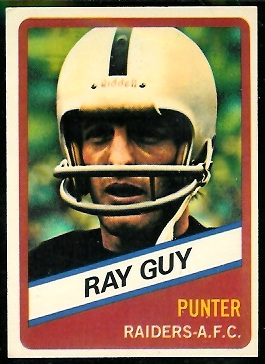
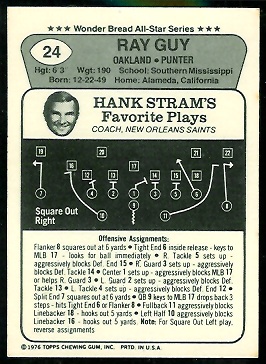
- Previous: W is for Wonder Bread–and Other Food Issues
- Next: Y is for Yale
- All of the ABCs
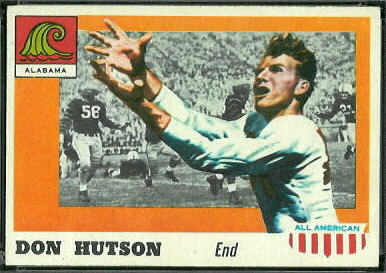
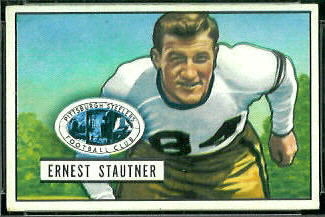
 And there’s even some contention about that: PSA’s
And there’s even some contention about that: PSA’s 